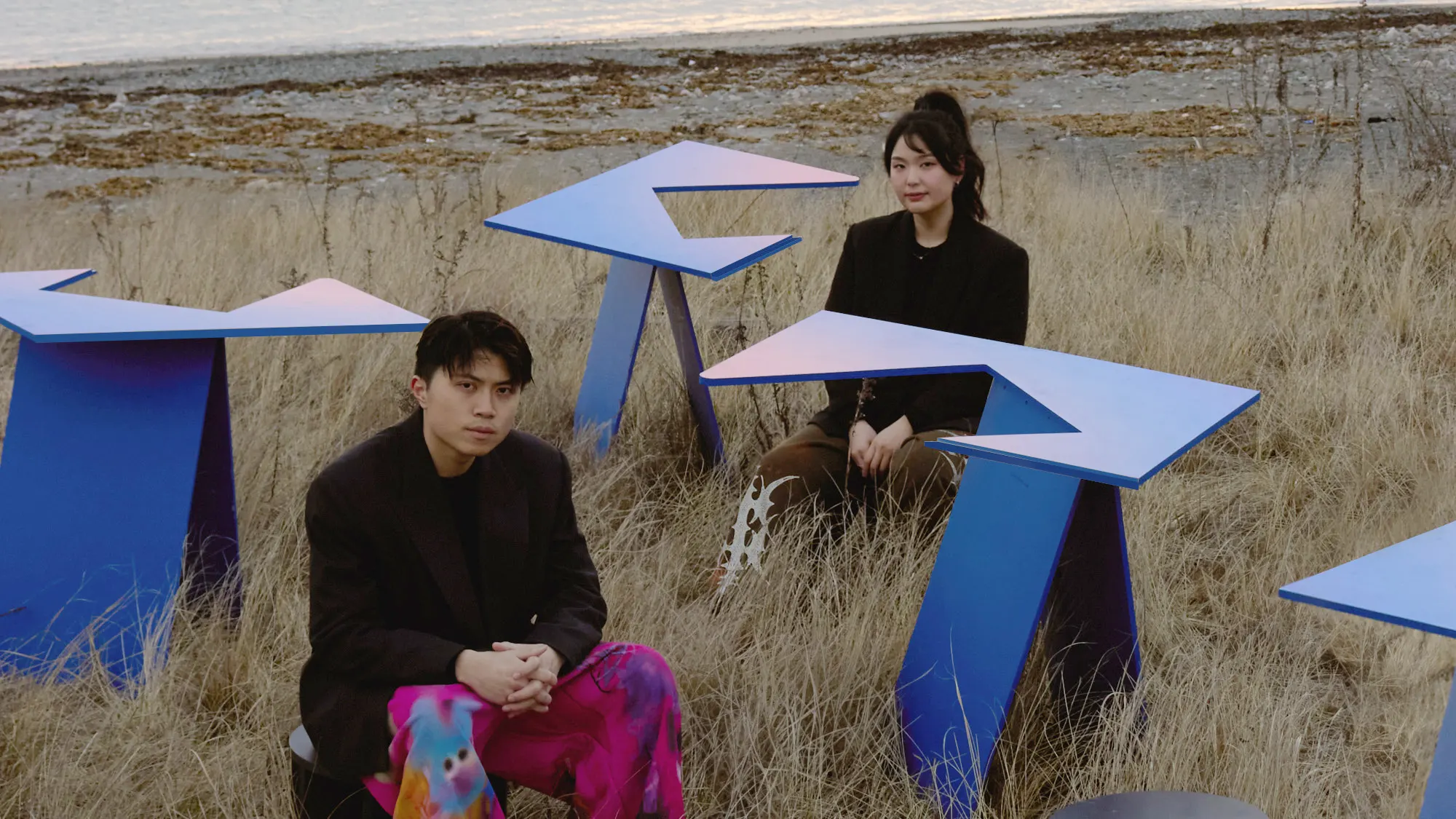HONMI (Bryan Hon Ting Wong and Namhi Kwun)
2024 Harold and Arlene Schnitzer Prize in the Visual Arts
More about the artist
BALCONIES BALCONIES BALCONIES
February 16 – March 29, 2024
Materials: Aluminum, Plywood, Paint, Print on Paper, Plastic
MIT Rotch Library and Deer Island
Supported by the Council for the Arts at MIT
A balcony provides a very peculiar type of sociality in buildings. Oscillating between personal and public, it is neither oversharing nor withdrawing into complete seclusion.
Regionally, balconies manifest in diverse adaptations. The Baltic boast soviet balconies with personalized features such as extended walls and fabrics, catering both privacy and thermal comfort. The Mediterranean elaborate historic balconies into vibrant social hubs, serving as communal bars and doubling as stages for performances. The Korean treats their balconies as front doors for logistics and moving furniture. Inspired by these social and spatial nuances inherent in balconies, HONMI have studied eight different types of balconies around the world and is bringing these distinct qualities back in the MIT campus.
Reimagining a “new” balcony, that is not the construction of an extended platform from a façade but rather as the conversion of in-between spaces into a “balcony-like” setting that is both interior and exterior, natural and artificial.
MIT’s main campus presents numerous opportunities for these interventions. Particularly where the brick wall and window of building 7 meets the Rotch Library, the wall, previously an exterior façade sat right beside the elevator facing inward to the library, became a site that could be converted into a place of gathering and sharing.
BALCONIES BALCONIES BALCONIES present research of eight balconies in eight buildings, with eight stories written in eight zines and an eight-pointed asterisk table for eight faculty and students.
2024 Schnitzer Prize Recipient HONMI’s Balconies Balconies Balconies performed in Deer Island. Credit: Jei Fan.
2024 Schnitzer Prize Recipient HONMI’s Zine Balconies series: Zine 01 (First edition). Credit: HONMI.
2024 Schnitzer Prize Recipient HONMI’s Zine Balconies series: Zine 01 (First edition). Credit: HONMI.
2024 Schnitzer Prize Recipient HONMI’s Balconies Balconies Balconies deployed in the Deer Island. Credit: Jie Fan.
2024 Schnitzer Prize Recipient HONMI’s Balconies, Balconies, Balconies exhibition opening at Rotch Library. Credit: HONMI.
2024 Schnitzer Prize Recipient HONMI’s Balconies, Balconies, Balconies exhibition opening at Rotch Library. Credit: Jabari Canada.
2024 Schnitzer Prize Recipient HONMI’s Balconies, Balconies, Balconies exhibition opening at Rotch Library. Credit: Jabari Canada.
2024 Schnitzer Prize Recipient HONMI’s Balconies Balconies Balconies performed in Deer Island. Credit: Jie Fan.
About the Artist
HONMI is an artist duo (Bryan Hon Ting Wong and Namhi Kwun) that seeks to expand the definition of spatial design by creating zines, furniture, exhibitions, and ephemeral spaces. Their work centers on art and architecture as a medium to promote awareness of geographical abstractions under modernism, revealing cultural disappearances, and expanding the definition of familiar lexicons with unfamiliar values.
Recently, their exhibition Balconies Balconies Balconies displayed in MIT Rotch Library have intervened the hidden space between the historic brick façade of MIT Building 7 and the library’s extension as a communal social balconies for faculty and students, the displayed artworks including zines, collages, and furnitures have emphasized the importance of locality and regionalism to the cultural influence of defining typologies.
All of their works are made collaboratively through the use of both physical and digital medium including wood crafting, furniture making, CAD modeling and drawing, as well as GIS spatial analysis. We believe that by pushing the boundaries and definitions of art and architecture, we could bring more awareness on social and environmental issues that are either intentionally hidden by modern states, or are disappearing from the public’s attention.
More at Bryan Hon Ting Wong and Namhi Kwun
Back to 2024 Schnitzer Prize in the Visual Arts

